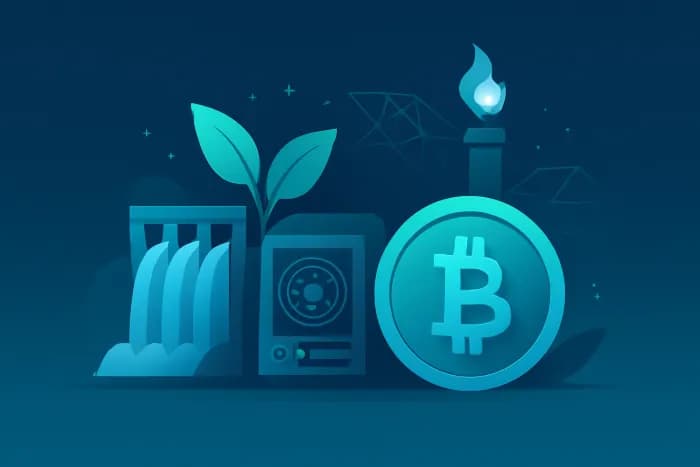Green Proof-of-Work: Hydro, Flare Gas & the New Era of Eco Mining

The environmental impact of cryptocurrency mining has long been a lightning rod for critics, with traditional Proof-of-Work (PoW) operations consuming energy comparable to entire nations. Yet beneath the headlines, a sustainability revolution is transforming Bitcoin mining through radical resource innovation. By colocating with stranded renewable assets and converting waste emissions into computational value, pioneering miners are turning PoW from an ecological liability into an unexpected catalyst for clean energy adoption.
Hydro Power: Tapping Stranded Renewable Potential
In Paraguay, miners leverage excess capacity from the Itaipu Dam—one of the world's largest hydroelectric facilities—where seasonal overproduction previously went unused. By deploying modular mining containers directly at power stations, these operations achieve two critical goals:
- Zero-carbon mining using otherwise wasted renewable energy
- Revenue stabilization for hydroelectric providers during low-demand periods
This model demonstrates how sustainable mining can create symbiotic relationships with renewable infrastructure, turning stranded assets into economic opportunities while avoiding new carbon emissions.
Flare Gas Mitigation: Turning Waste into Value
Oil fields globally burn approximately 144 billion cubic meters of natural gas annually—releasing CO₂ without economic benefit. Companies like Crusoe Energy deploy mobile data centers at well sites to capture this flare gas, converting it into electricity for Bitcoin mining. This approach:
- Prevents methane release (84x more potent than CO₂)
- Generates revenue from wasted resources
- Cuts equivalent emissions by 63% versus flaring
The upcoming U.S. methane fee ($900/ton by 2026) makes this model increasingly economical, aligning environmental incentives with mining profitability.
Geothermal & Nuclear: Next-Gen Mining Frontiers
Iceland's Ethereum Classic operations harness volcanic geothermal energy for 100% renewable mining, while emerging small-modular nuclear (SMR) prototypes in the U.S. promise:
- 24/7 carbon-free energy unaffected by weather
- Grid stability through flexible load response
- Sub-30g CO₂/kWh emission profiles
These technologies could eventually enable mining facilities to function as controllable demand resources that support grid reliability during renewable intermittency.
The Green Mining Tech Stack
Tokenized Energy Credits
Blockchain-based renewable energy certificates (RECs) now enable miners to prove sustainable operations on-chain. Platforms like Energy Web Token create transparent markets where:
- 1 MWh renewable energy = 1 verifiable token
- Purchases directly fund new clean energy projects
- Buyers access premium "green hash-rate" marketplaces
Policy-Driven Transformation
Regulatory tailwinds accelerate this shift:
- U.S. methane fees make flare gas capture profitable
- EU taxonomy recognizes low-carbon crypto as sustainable
- Renewable tax credits under IRA lower entry costs
These frameworks create economic advantages for miners using stranded renewables versus grid-dependent operations.
The ESG Crypto Imperative
As institutional capital demands verifiable sustainability, green PoW operations report significant advantages:
| Metric | Traditional Mining | Eco-Mining |
|---|---|---|
| Emissions Intensity | 500-700 gCO₂/kWh | 0-50 gCO₂/kWh |
| Energy Cost | $0.04-$0.12/kWh | $0.01-$0.03/kWh |
| Regulatory Risk | High | Low |
This data reveals how ESG crypto principles are becoming operational necessities rather than ethical luxuries.
Conclusion: Mining's Clean Energy Catalyst
The narrative around PoW's environmental impact is shifting from problem to solution. By monetizing wasted renewables and methane—while creating demand for next-gen nuclear and geothermal—miners are building infrastructure that accelerates the clean energy transition. As tokenized RECs and carbon markets mature, renewable energy integration will likely become the standard rather than the exception, transforming Bitcoin mining into an unexpected driver of decarbonization.